Part of a series of articles titled Alaska Park Science - Volume 16 Issue: Science in Alaska's Arctic Parks.
Article
Alaska's Northern Parks: The Wonder of the Arctic
By James P. Lawler, Jeff Rasic, and Peter Neitlich, National Park Service
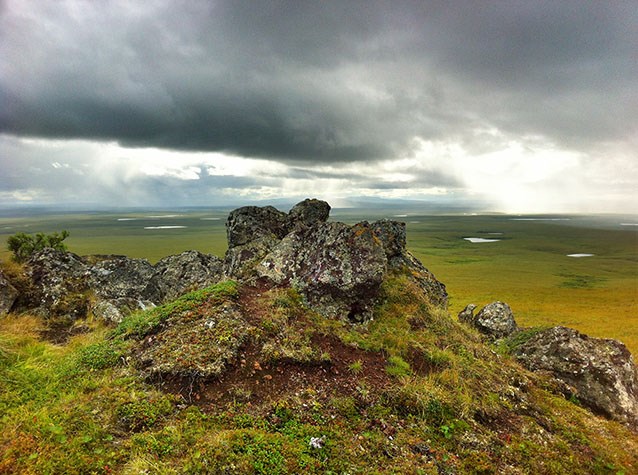
NPS photo
February 12, 2014 - Howard Pass, Noatak National Preserve, Alaska; temperature: -42°F; average wind speed: 71 mph; wind chill: -97°F (Sousanes and HiIl 2014).
This weather event exemplifies one of the challenges of living in the Arctic: It can be cold. Then, of course, there is the light, or lack of it. Here at Howard Pass, the sun disappears for close to a month in the dead of winter, but in the midst of the summer, it stays above the horizon for a month. Another thing to consider regarding Howard Pass is the caribou (Rangifer tarandus). For thousands of years, caribou herds have migrated from the North Slope of Alaska to more southerly climates through this pass and back again. This can be a big event. In 2003, the Western Arctic Caribou Herd, whose range encompasses Howard Pass, numbered approximately 490,000 animals (Dau 2015). Given the predictable migratory corridor, as well as periods of great abundance of caribou, it’s not surprising that people are closely attuned to this resource. For thousands of years, hunters have converged on Howard Pass and it contains one of the densest concentrations of archaeological sites in northern Alaska.
The National Park Service manages five parks that fall partially or entirely within the Arctic tundra biome, the ecoregion situated north of tree line. These five parks—Bering Land Bridge National Preserve, Cape Krusenstern National Monument, Gates of the Arctic National Park and Preserve, Kobuk Valley National Park, and Noatak National Preserve—encompass 19.3 million acres of land and constitute approximately 25% of the land area managed by the National Park Service nationwide. These are undeveloped places with free flowing rivers and extremely few facilities. Only a single road crosses these lands, a 23-mile gravel industrial road through the northern end of Cape Krusenstern National Monument. The Interior parks in this cluster span the rocky and barren mountains of the western Brooks Range to the southern Chukchi Sea to the east. They include a variety of ecosystems: dry alpine tundra, lowland wet tundra, boreal forest, coastal tundra, lagoons, and estuaries. This is wilderness at a massive scale with largely intact ecosystems, but also a land that has been inhabited by people for thousands of years.
Fifteen thousand people live in northwestern Alaska, and many of them access and transit the parks to continue the long tradition of subsistence, including harvesting resources from this wild area. Inupiat people living in Shishmaref, Wales, Deering, and Kotzebue enjoy the bounty of coastal resources including sea mammals and fish. Other communities like Anaktuvuk Pass, Kobuk, Shungnak, and Ambler travel inland rivers and mountains and harvest caribou, sheep, fish, and berries. But it’s not all about food. Time on the land is time spent connecting and reconnecting with friends and relatives, places, stories, and other values. Protecting the ecology, history, archaeology and subsistence lifestyle of the U.S. Arctic is the reason parks were established in northern Alaska.
As exemplified above, one of the defining characteristics of ecosystems is the climate. Large bodies of open water tend to moderate climate. Temperatures tend to be more extreme inland compared to the coast. The twist is due to the annual formation of pack ice. This ice largely moderates the effect of the sea and for this reason, even coastal areas in Arctic parks can be intensely cold with little precipitation during the winter months. To deal with these temperatures, winds, and the limited food and energy resources often associated with the winter months, plants, animals, and people can adapt and survive in place, or they can move to more favorable conditions.
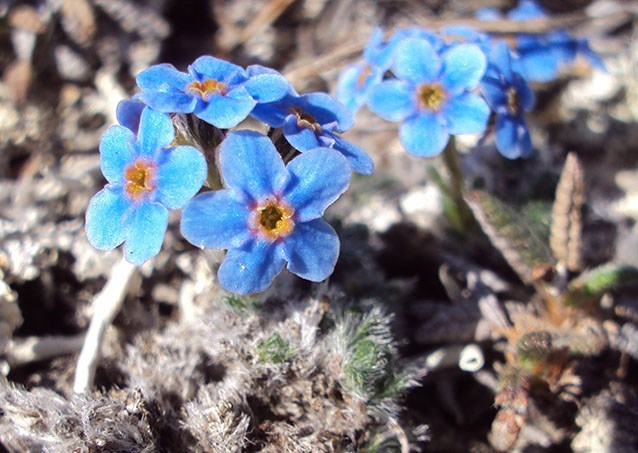
NPS photo
Unlike plants, animals have the option of moving. The migration by some arctic wildlife is one of the most extraordinary phenomena known in the natural world. Wildlife migrate from, through, and past these Arctic parks by land, sea, and air. On land, caribou are the champions. Some individuals have been known to cover more than 3,000 miles in a year (Fancy et al. 1989). In northwestern Alaska, caribou cycle between their calving areas on the North Slope of Alaska, to mid-summer insect-relief in coastal and mountainous areas before turning south to spend their winter on the Seward Peninsula; an annual migration of approximately 1,900 miles (Joly 2012).
By sea, gray whales (Eschrichtius robustus) are acknowledged migration champions. The eastern stock of gray whales spend their summers feeding in the Chukchi, Beaufort, and northwestern Bering Seas. In the fall, the whales start their migration south swimming past Cape Krusenstern National Monument and Bering Land Bridge National Preserve. A few months later, they arrive at their winter destination off the coast of Mexico’s Baja Peninsula to breed and calve. By mid-February, some whales are already heading north for the summer season. This equates to a travel distance of approximately 10,000 miles (NOAA 2016a). Others like the bearded seal (Erignathus barbatus) migrate with the annual formation and disappearance of pack ice. Bearded seals are an “ice seal.” They use pack ice as a platform for resting between feeding bouts and for delivering their pups (NOAA 2016b). In the winter, they can be found in open leads and by breathing holes (that they maintain with their claws) offshore of both coastal Arctic parks.
The majority of the birds present in Arctic parks in the summer take their leave in the early fall to migrate south. Some of these migrations are epic not only in the distance covered by some very small animals, but in the routes chosen. The Northern Wheatear (Oenanthe oenanthe) nests in the mountains of the Brooks Range. Come fall, this bird, that is slightly smaller than an American Robin (Turdus migratorius), heads west to Russia and then cuts across southwest Asia to eventually end up in sub-Saharan Africa, over 18,000 miles round trip (Bairlein et al. 2012). Not to be outdone, the Bar-tailed Godwit (Limosa lapponica), a medium-sized shore bird that nests in coastal areas of northwestern Alaska, leaves in the fall and begins its southern migration to New Zealand. The route chosen is rather interesting. Instead of playing it safe and flying over land, Bar-tailed Godwits head out over the open ocean. Godwits aren’t built to land and feed on the open water. As a consequence they need to stay in the air until they reach their destination meaning 7,200 miles of flying, eight days in the air, in one push (Gill et al. 2005).
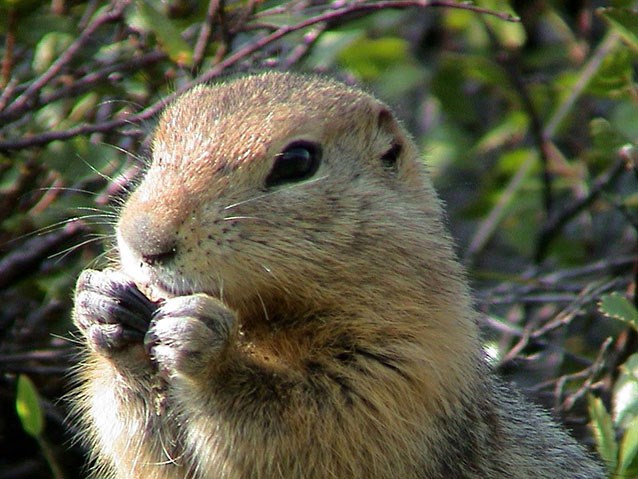
NPS photo
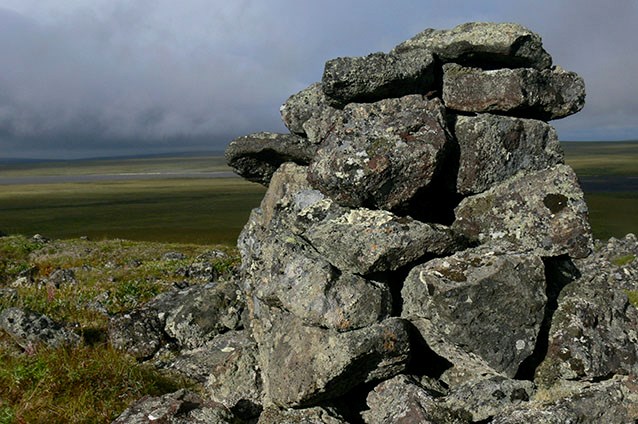
NPS photo
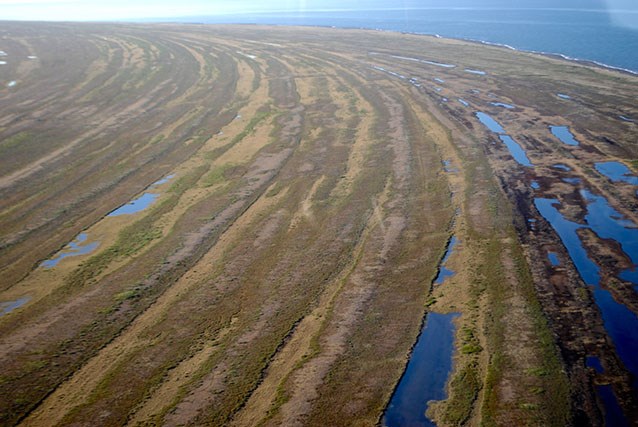
NPS photo
REFERENCES
Bairlein, F., D. R. Norris, R. Nagel, M. Bulte, C. C. Voigt, J. W. Fox, D. J. T. Hussell, and H. Schmaljohann. 2012.
Cross-hemisphere migration of a 25 g songbird. Biology Letters 8: 505-507. doi:10.1098/rsbl.2011.1223
Barnes, B.M. 1989.
Freeze avoidance in a mammal: body temperatures below 0 Degree C in an Arctic hibernator. Science 244 (4912): 1593-1595. doi:10.1126/science.2740905
Dau, J. 2015.
Units 21D, 22A, 22B, 22C, 22D, 22E, 23, 24 and 26A. Chapter 14, pages 14-1 through 14-89 In P. Harper, and Laura A. McCarthy, editors. Caribou management report of survey and inventory activities 1 July 2012–30 June 2014. Alaska Department of Fish and Game, Species Management Report ADF&G/DWC/SMR-2015-4, Juneau.
Fancy, S. G, L. F. Pank, K. R. Witten, and W. L. Regelin. 1989.
Seasonal movements of caribou in arctic Alaska as determined by satellite. Canadian Journal of Zoology 67(3): 644-650. doi:10.1139/z89-093
Gill, R. E., Jr., T. Piersma, G. Hufford, R. Servranckx, and A. Riegen. 2005.
Crossing the ultimate ecological barrier: evidence for an 11,000-km-long nonstop flight from Alaska to New Zealand and eastern Australia by Bar-tailed Godwits. Condor 107:1-20. doi: 10.1650/7613
Joly, K. 2012.
Caribou vital sign annual report for the Arctic Network Inventory and Monitoring Program: September 2009-August 2011. Natural Resource Data Series NPS/ARCN/NRDS— 2012/233. National Park Service, Fort Collins, Colorado.
Lawler, J. P. and R. G. White. 1997.
Seasonal changes in metabolic rates in muskoxen following twenty-four hours of starvation. Rangifer 17(3) 135-138. doi.org/10.7557/2.17.3.1365
National Oceanic and Atmospheric Administration (NOAA). 2016a.
Marine Mammal Laboratory, Marine Mammal Education Web: Gray Whale. Available at: http://www.afsc.noaa.gov/nmml/education/cetaceans/gray.php (accessed November 19, 2016)
National Oceanic and Atmospheric Administration (NOAA). 2016.
Marine Mammal Laboratory, Marine Mammal Education Web: Bearded Seal. Available at: http://www.afsc.noaa.gov/nmml/species/species_bearded.php (accessed November 19, 2016)
Reinersten, R. E. and S. Haftorn. 1986.
Different metabolic strategies of northern birds for nocturnal survival. Journal of Comparative Physiology 156: 655-663.
Sousanes P. and K. Hill 2014.
Arctic Network Natural Resource Brief: Western Arctic parklands winter 2013-2014 weather summary. National Park Service, Fairbanks, AK.
Last updated: April 6, 2017
